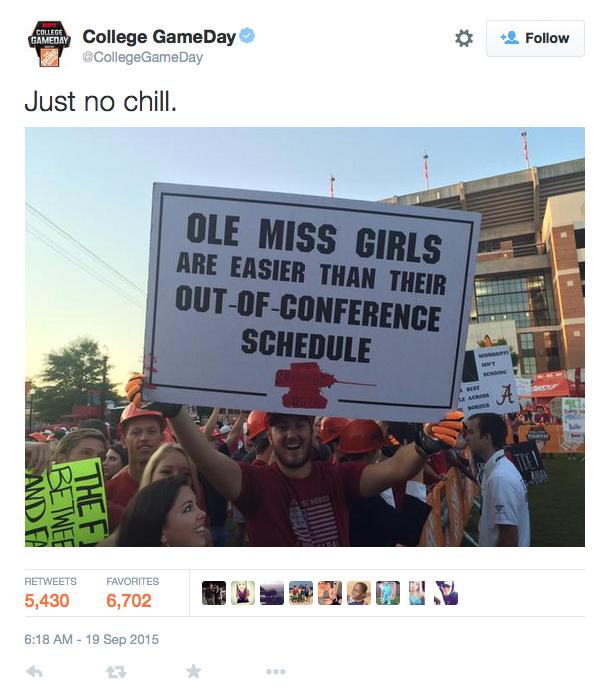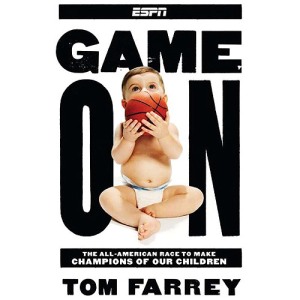
I am excited to be headed to Waco, TX later this week to take part in Baylor University’s Symposium on Faith and Culture which has chosen as its theme this year, “The Spirit of Sports.” I look forward to spending time with a friend in Dallas and exploring many facets of the relationship between sports and the Church. On Saturday morning I will be presenting a paper entitled, “Pastoral and Theological Implications of the Youth Sports Industrial Complex.” This has proven to be a good exercise in trying to simplify the message I want to present to churches and youth ministries regarding their relationships to the world of youth sports.
Eventually, I will upload the entire paper under the “Stuff I’ve Written” tab, but in this post I will provide a brief overview of what I’ll be presenting. My focus is on the local church, and it is especially relevant for those who work in youth ministry. While young people are involved in a wide variety of extracurricular activities, it’s no secret that youth sports is by far the most popular. And for most youth ministers, they prove to be the most challenging to work around. Most youth ministers I’ve talked with seem to be at a loss of language in trying to articulate what exactly is at risk in their youth’s hyper-involvement in sports. More often than not, they dismissively shrug their shoulders and complain that sports takes their teens away from youth group activities and church services and makes them feel like they are fighting a losing battle. 
After all, sports can promote healthy lifestyles and physical activity in a generation facing an obesity epidemic, reinforce qualities like team work and self discipline that serve as important life skills, and immerse children in positive social environments where they can grown and mature their interpersonal skills. The benefits of youth sports are well documented, so for the Church to explore any shortcomings may seem like nothing more than a needless exploration of “too much of a good thing.” In response to this, I believe that the Church as a whole, and youth ministry in particular, is in a dire need of a more robust theology to help address the many complex realities of youth sports.
Too often, the Church has attempted to wrestle with the many practical issues that sports presents: performance-enhancing drugs, injuries, cheating, etc. without first establishing a robust theological foundation from which to build. This has left our message anemic, at best, or completely absent, at worst. I want to propose three theological areas from which the Church can begin to build this more robust understanding of sports and, subsequently, begin to provide a more effective pastoral voice to the families of youth athletes.
1 – The Rhythm of Life 
Simply complaining that kids are too busy to do anything with their youth group is a shallow argument from frustrated youth ministers. While weekend out-of-town tournaments have made it impossible for many families to maintain a healthy connection with a local church family, the busyness of youth sports is about more than “being at church.” The schedules of sports families are low hanging fruit in what frustrates most youth ministers. We should be cautious, however, that our frustration over sports schedules isn’t simply a hidden jealousy that they’re cheating on us with their sports team. Something more significant must be considered.
The words of Ecclesiastes rings a little differently in today’s sports-obsessed world than it did in Old Testament times: “There is a time for everything and a season for every activity under heaven” (Ecclesiastes 3:1). I don’t think he was talking about sports seasons! More to the point here, the writer reinforces the beauty and need for balance in our lives. Balance was built into the very fabric of Israel. Work six days, then rest. Work six years, then rest a year. The rest was for the citizens, for the animals, and for the land. Balance is built into the very fabric of creation itself. That’s the problem with most youth sports today. We talk about sacrifice, commitment, and all that. But is that simply another way of excusing our imbalance? More than questioning how often our sports families are attending a worship service any given Sunday, we should be asking the more dynamic question: What is dictating the rhythm of their family’s life?
2 – The Formation of Identity 
Perhaps the crucial developmental aspect of adolescents is their identity formation. The many environmental influences on a young man’s or young woman’s life begins to really show their impact as teenagers are answering that question, “Who am I?” Sports has an interesting role in this whole process. Many young people who excel in a particular sport find acceptance and popularity there that they cannot find anywhere else. Just think about the life that the starting quarterback lives in high schools across the country. Particularly in those situations, their sport becomes a very significant part of their identity formation.
This aspects of youth sports isn’t inherently bad, however often times the identity youth find in sports is the very identity they are intended to have in Christ. In Galatians 3, Paul emphasizes the importance of finding our identity solely in Christ – beyond racial, sexual, and socioeconomic terms. It seems silly to extend those core aspects of identity to sports – until you watch a college or professional sporting event. The painted chests, dyed hair, and voracious chants are visual reminders of the identity-forming power of sports. I believe it has become common place for many people to find their identity primarily in sports and allow that to dictate their participation in their faith.
3 – Theology of the Body
While I haven’t presented these three in any particular order, this may be the best starting point for moving forward in our ministries of sports. Too many parachurch organizations and sports ministries have treated sports as a neutral entity and have seen it simply as an effective way to draw a crowd so the Gospel can be shared. Unfortunately, this reinforces a dualism that has long pervaded Christianity. Although it may sound like metaphysical mumbo jumbo to say that the Platonic dualism has led to an unnecessarily negative view of the body, there are, in fact, significant, practical consequences.
When sports are viewed as simply a means to an end, we have a tendency to ignore the ethic and practice of the sport. One example illustrates this well. What is the Christian to do with competition? Competition is at the heart of athletics (not to mention America itself) and yet serious theological reflection on competition is almost impossible to find. As a result, we have a difficult time knowing how to teach our children to compete in a Christian fashion, because we’re not exactly sure ourselves. By and large, I haven’t seen much difference between what Christians expect from sports than what anyone else expects.
I believe that the way forward begins with a better articulated theology of the body. We need to teach our children about the beauty in sports and have serious conversations about the challenges of reconciling the Sermon on the Mount and competitive arenas.
Much more needs to be said on these matters, but I believe that if we could just take as a beginning point, these three theological areas and dedicate some time we will be more prepared for the many challenges that lie ahead in the world of youth sports. I hope to continue to refine this message and find ministers and youth ministers who have a passion for filling in this much-too-neglected area.
If you plan to be at the National Conference on Youth Ministries in Denver next January, I’ve got a ten minute talk to share some more thoughts in this area!

 other team – or player – “down.” Taking them down is part of the game! If we can’t all win – someone has to lose. And we’d just all assume it would be “them ” lose instead of us. And, ever so subtlety, we feel ourselves hoping, not just that we win, but that they lose. Just watch a parent when their child is playing a team with a player who is significantly better than all the other players. They can easily find themselves rooting for that player’s failure as much as their own child’s success. It’s the same feeling we get when we are playing a game when we know that it is impossible to win. Those are difficult emotions to process.
other team – or player – “down.” Taking them down is part of the game! If we can’t all win – someone has to lose. And we’d just all assume it would be “them ” lose instead of us. And, ever so subtlety, we feel ourselves hoping, not just that we win, but that they lose. Just watch a parent when their child is playing a team with a player who is significantly better than all the other players. They can easily find themselves rooting for that player’s failure as much as their own child’s success. It’s the same feeling we get when we are playing a game when we know that it is impossible to win. Those are difficult emotions to process. It was January 11, 1987. I was seven and a half years old. It was Cleveland, Ohio. And it was the first time that Denver Broncos quarterback John Elway slowly and painfully ripped out the hearts of Cleveland Browns fans everywhere. It became known as “The Drive. ” [All Browns fans close your eyes, others can watch this
It was January 11, 1987. I was seven and a half years old. It was Cleveland, Ohio. And it was the first time that Denver Broncos quarterback John Elway slowly and painfully ripped out the hearts of Cleveland Browns fans everywhere. It became known as “The Drive. ” [All Browns fans close your eyes, others can watch this 
 The culmination of the 2006 football season found Meyer’s Gators taking on the Ohio State Buckeyes. I remember watching and listening to Urban Meyer in the weeks leading up to the game. I remember thinking how much of a pompous ass he was. I remember how much I didn’t care for his demeanor and his cut-throat mentality (he has a reputation for running up the score on lesser opponents). Compared to the buttoned-up, senatorial, humble ethos of Ohio State’s coach Jim Tressel, Urban Meyer was an arrogant prick. And that arrogant prick helped kick my team’s behind in one of the more lopsided national championships you will ever see. Which made me hate him all the more.
The culmination of the 2006 football season found Meyer’s Gators taking on the Ohio State Buckeyes. I remember watching and listening to Urban Meyer in the weeks leading up to the game. I remember thinking how much of a pompous ass he was. I remember how much I didn’t care for his demeanor and his cut-throat mentality (he has a reputation for running up the score on lesser opponents). Compared to the buttoned-up, senatorial, humble ethos of Ohio State’s coach Jim Tressel, Urban Meyer was an arrogant prick. And that arrogant prick helped kick my team’s behind in one of the more lopsided national championships you will ever see. Which made me hate him all the more. Now . . . you know what? . . . he wasn’t too bad of a guy after all. Still intense. Still kind of cocky. But don’t you want that for your coach? Then the magical season that was 2014, and the Buckeyes won the first ever college football playoff, and the entire state of Ohio has forgotten all about Jim Tressel. Well, not forgotten, more like forgiven.
Now . . . you know what? . . . he wasn’t too bad of a guy after all. Still intense. Still kind of cocky. But don’t you want that for your coach? Then the magical season that was 2014, and the Buckeyes won the first ever college football playoff, and the entire state of Ohio has forgotten all about Jim Tressel. Well, not forgotten, more like forgiven. However, this reality isn’t limited to the highest levels of sports. It was early on in my son’s baseball career when I realized how conflicted I would be when it comes to his success. If the bases are loaded and there are two outs and the game is tied and my son is up to bat, what is the right outcome to hope for? Do I hope he throws a ball and my son draws the winning RBI? Do I pray for a meat ball right down the middle that I know my son can smash? How do I root him on, without wishing ill on the other team or player? Could it be that the other team needs a win more than our team at the grandest scheme of life? Could it be that the kid in that illustration would be much more greatly blessed with a strike out than my son would be with a walk off hit?
However, this reality isn’t limited to the highest levels of sports. It was early on in my son’s baseball career when I realized how conflicted I would be when it comes to his success. If the bases are loaded and there are two outs and the game is tied and my son is up to bat, what is the right outcome to hope for? Do I hope he throws a ball and my son draws the winning RBI? Do I pray for a meat ball right down the middle that I know my son can smash? How do I root him on, without wishing ill on the other team or player? Could it be that the other team needs a win more than our team at the grandest scheme of life? Could it be that the kid in that illustration would be much more greatly blessed with a strike out than my son would be with a walk off hit?


 ESPN took flack for the first sign before GameDay was even over, and Urban
ESPN took flack for the first sign before GameDay was even over, and Urban 





